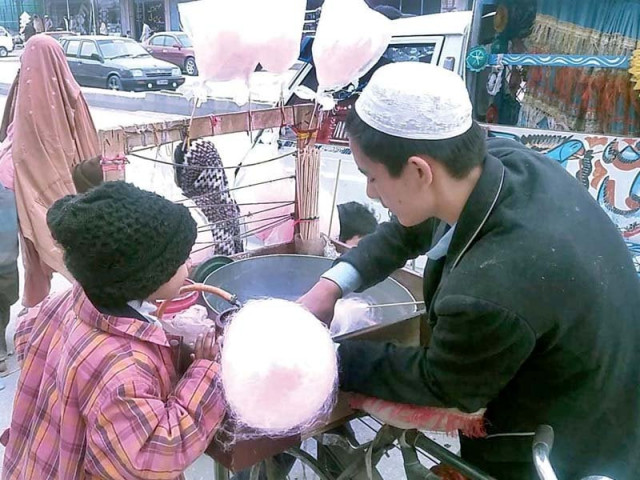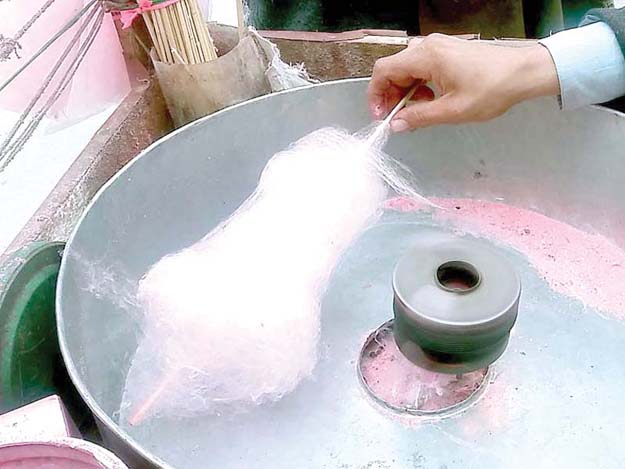Cotton candy continues to charm Peshawar streets
Malooch, the Pashto name for the confection, is sold by around 100 vendors still roaming the streets of Peshawar

Also known as fairy floss or candy floss the spun sugar delight has maintained its presence despite the introduction of the countless number of candies and chocolates in the market.
In Urdu, cotton candy is called as lachay while in local Pashto language it is known as malooch.
Apart from children, cotton candy is also liked by adults and even elderly people who on seeing it in the market become nostalgic about their childhood and school days when they bought and ate this most favoured sweet.
“Whenever I see cotton candy, it drives my mind back to childhood when I used to ask for money from my parents to buy it,” said Muhammad Sohail, a city dweller who owns a shop.
The taste of intense sweetness and instant dissolution of cotton candy in the mouth is still fresh in my mind, Sohail said.

“I vividly remember joyfulness we had whenever we gathered around cotton candy seller in our street and tried to purchase it before anyone else,” Sohail went on to say with a toothy grin while relating his childhood memories.
“Cotton candy is made through a hand-propelled machine which spins sugar liquefied through heating,” informed a candy seller.
The machine used for preparing cotton candy is installed in bicycle making it easier for the seller to visit different places in the city for selling the merchandise.
Selling cotton candy outside a school on Warsak Road, Abdul Rauf said that he earns about Rs700 to 800 per day, claiming that margin is handsome.
He said he purchased the machine, bicycle and an LPG cylinder for heating at a cost of Rs7,000 and now selling candy in different areas of Peshawar for the last one and a half year. He said around 100 cotton candy sellers are doing this business in the city.
About the ingredients, he says they include only sugar and food colour. The sugar is poured in a hollow rotating head with a burner underneath for heating. The flame near the rim of the head melts sugar which is squeezed out through tiny holes by centrifugal force.
The molten sugar solidifies in the air and is caught in a larger bowl which totally surrounds the spinning head and is gathered around a tiny wooden stick in round shape creating sweet cotton which is also sold through packing in transparent plastic bags, Abdul Raff explained.
“I like this candy and enjoy eating it”, commented Abdul Gayur, a sixth-grade student while purchasing cotton candy.
“Chocolate and candies have own taste and cotton candy has its own,” which has its own craving, said the young boy.
The machine spun cotton candy was invented in 1897 and was first introduced to a wide audience in 1904. In 1970, an automatic cotton candy machine was created which made the production of the candy easier.
The popularity of the sweet commodity can be gauged from the fact that in the United States December 7 has been declared as National Candy Day.
Published in The Express Tribune, February 6th, 2019.













COMMENTS
Comments are moderated and generally will be posted if they are on-topic and not abusive.
For more information, please see our Comments FAQ